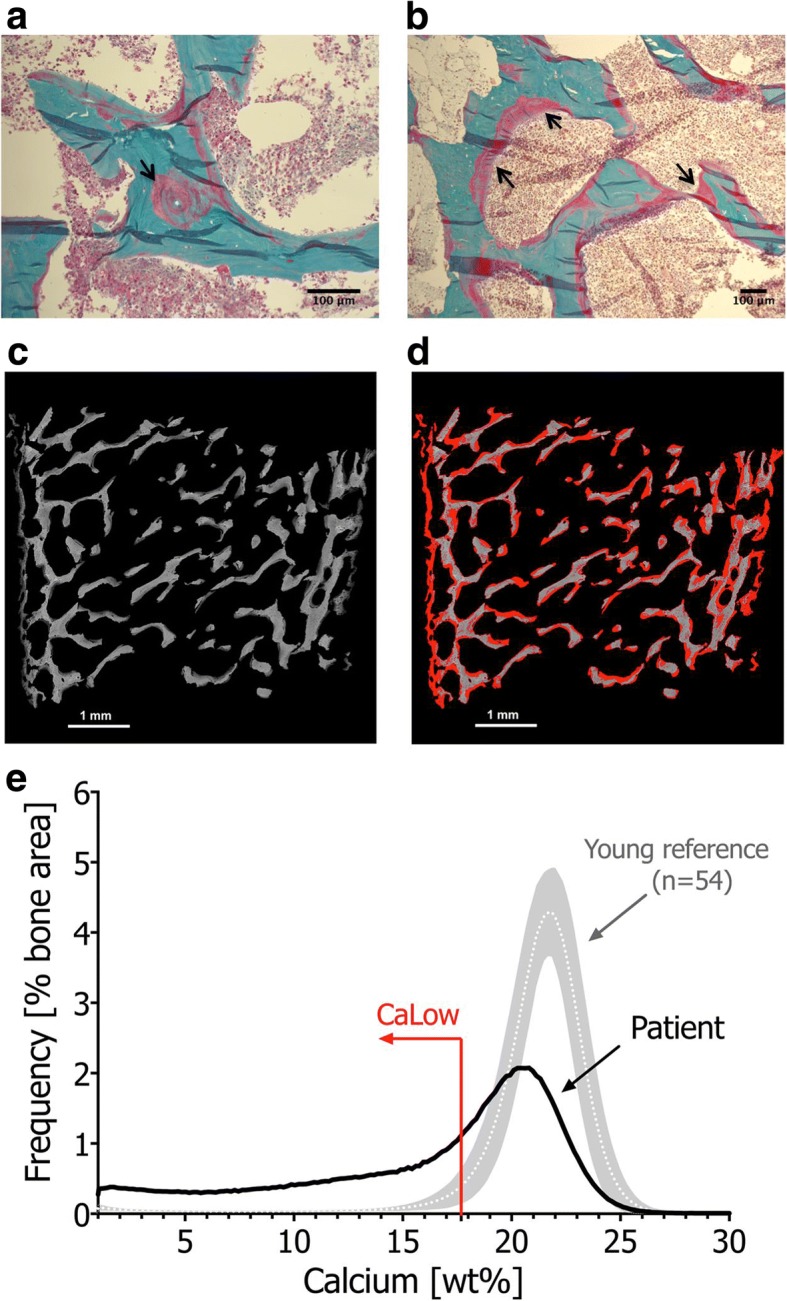Fig. 3.

Histomorphometric and Quantitative Backscattered Electron Microscopic Analysis. Goldner’s Trichrome staining (light microscopy) of a post-mortem transiliac bone sample from Patient 1 (a, b) demonstrated broad seams of pink stained areas corresponding to non- or poorly mineralized matrix and regions with blurred pink-green transition (black arrows), next to mineralized matrix (green). Backscattered electron images of the complete bone sample surface (c, d) show low mineral content in dark grey, normal/high mineral content in bright grey and unmineralized matrix appears black (c). To demonstrate the massively increased primary mineralization, represented by areas mineralized below 17.68 wt% calcium, corresponding to the 5th percentile of the adult reference range (CaLow) [10], these areas were highlighted in red (d). The BMDD curve of patient 1 (e) was shifted towards lower mineral content, its width at half-maximum was broader (CaWidth + 55%) due to increased heterogeneity in mineralization, and the fraction of poorly mineralized matrix was markedly increased (CaLow + 640%). References from Fratzl-Zelman et al. [36]
